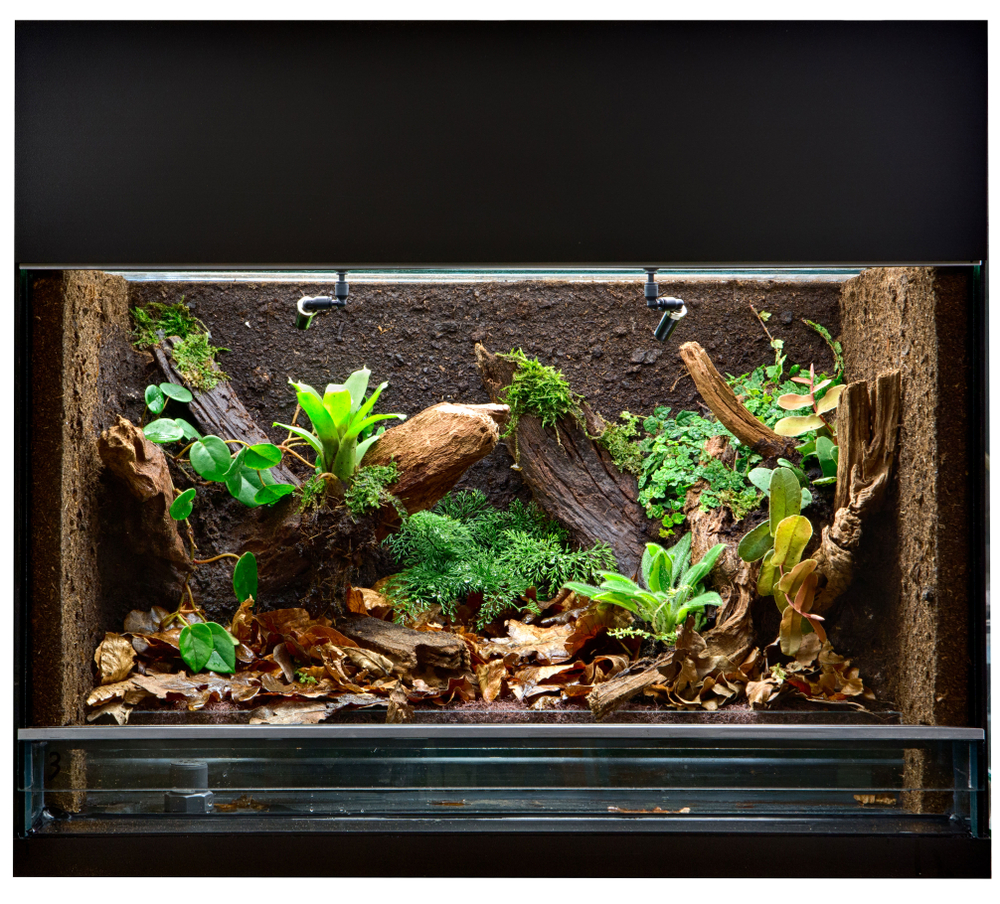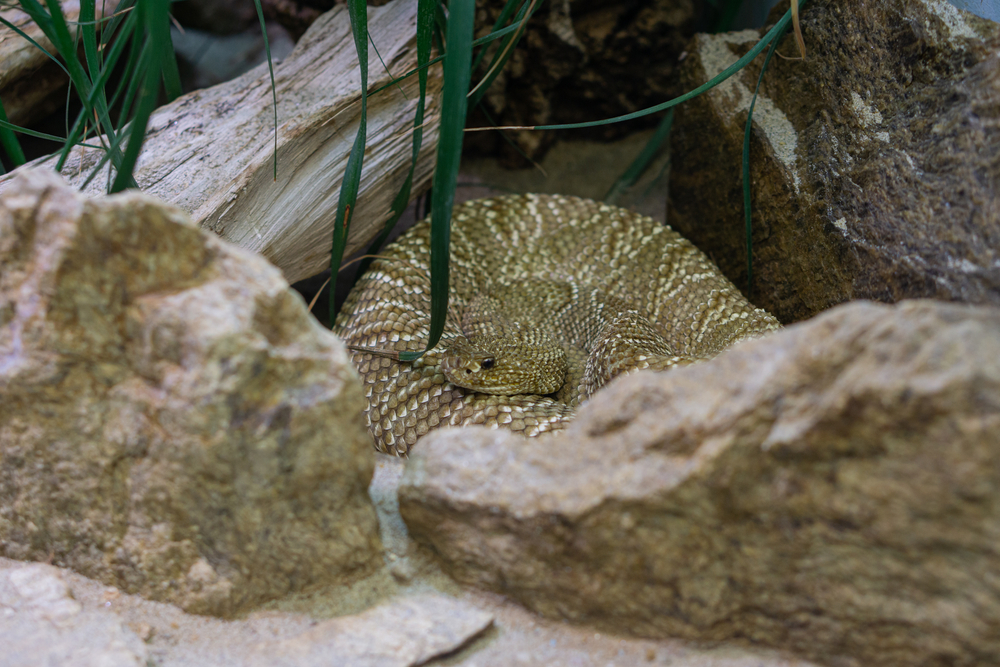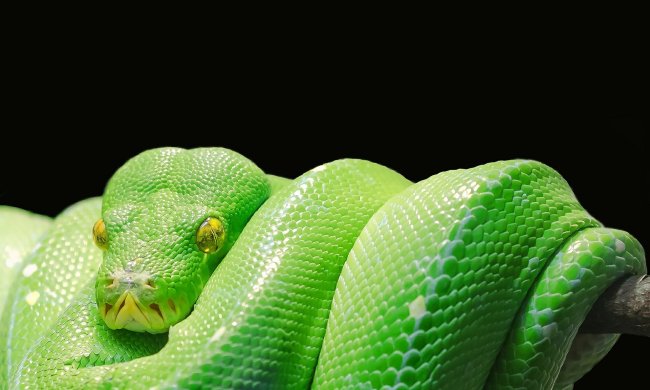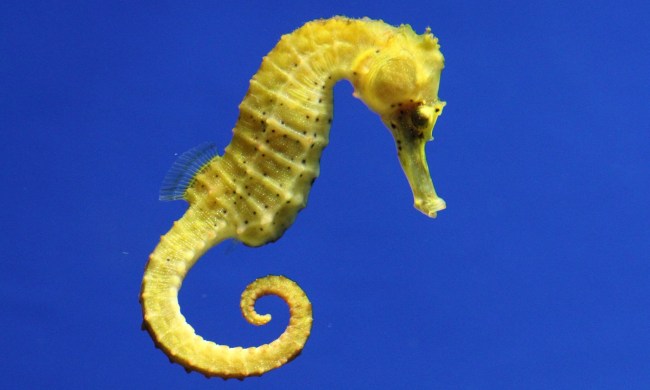After careful consideration, you’ve decided to add a snake to your family. Congratulations! Snakes are quiet companions that don’t need to be walked or fed every day and are easy to clean up after. What’s next? In order to properly care for your new snake, make sure you have everything they need to be comfortable before you bring them home. Here’s a quick checklist.
Housing
Snakes are fairly basic creatures. As long as their enclosure is big enough, well-ventilated, and provides adequate heat, and hiding places, they are content. With a few limitations, snakes can live in a variety of enclosures:
- Vivariums, which is basically a terrarium with a reptile living in it, are some of the most common snake enclosures. They are typically made of glass and available at your local pet store.
- Plastic containers, even those as simple as plastic storage bins, are another preferred enclosure. Some pet owners prefer plastic to glass containers because they are better at retaining heat and humidity.
- Fiberglas cages, which are made of a plastic material reinforced with glass fibers, are available commercially.
- Wood or pegboard is another option; however, these materials are harder to keep clean.
Wire mesh or screen cages are not recommended unless the mesh is very fine and the wire is smooth.
How large should the enclosure be?

Most snakes under 6 feet will be happy in a 20-30 gallon tank.
Note: Snakes are cunning escape artists. To keep your new pet safe and put your family and friends at ease, make sure whichever container you choose has sealed seams and a top that closes securely.
Bedding (substrate)
Once you’ve decided on what type of enclosure to purchase, it’s time to choose the bedding. As with most decisions, this one also depends on the type of snake you’re purchasing:
- Cypress mulch works well for subtropical snakes that need a humid climate.
- Wood shavings are well-suited for snakes needing a dry climate.
- Carpet/artificial turf is a good option for snakes that do not like to burrow, although it must be washed frequently.
- Newspaper and paper towels are inexpensive and easy to remove when soiled.
Heat and humidity
Because snakes are unable to regulate their own body temperature, their habitat needs to have a heated area as well as a cooler area where they can hide and sleep. You can achieve this with an under-tank heating pad (recommended) or an overhead heat lamp. Use caution when using heat lamps, as they can stress your snake and give it a sunburn.
Humidity is important, too. The right conditions encourage your snake to shed its skin as it grows, which can be as often as once a month. Monitor the humidity in the habitat with a hygrometer, an inexpensive instrument that measures the amount of water vapor in the air.
The amount of heat and humidity is directly related to the type of snake you own. As caretaker, you’ll want to mimic your snakes’ natural habitat as much as possible. That means that a snake originating in the deserts of Arizona will need a much drier environment than one from a moist, tropical climate.
Lights
Your snake’s habitat should receive 10-12 hours of “sunlight” each day. Snakes use the sun’s ultraviolet rays to produce Vitamin D, which keeps their bones healthy and strong (yes, a snake has bones!). Vitamin D also helps with calcium production. Since ultraviolet rays don’t penetrate the window pane, simply keeping your snake’s enclosure in the window won’t fulfill its need for ultraviolet light. Here are some lights that might help:
- Incandescent bulbs, like the ones you use in your light fixtures, are suitable for use as a heat source, too. Be sure to choose the wattage suitable for your lamp.
- UVB snake lights promote the synthesis of Vitamin D3 in snakes, which allows them to process calcium into their systems. Because most snakes obtain calcium from the liver of the prey they eat, special UVB lighting isn’t always necessary.
Each type of snake has different light requirements, so make sure you understand what is healthiest for your pet.
Hiding places

In the wild, snakes spend a lot of time curled up beneath a rock or tucked away inside another animal’s burrow or cave. Hiding is part of their natural instinct. It helps them feel protected and secure, so it’s important for you to provide these areas in their habitat.
There are plenty of “hides” you can purchase commercially online or at your favorite pet store. It’s also possible to create your own using common household items such as plastic containers or flower pots. You can also use outdoor items such as rocks and wood, as long as they don’t have any sharp edges and have been cleaned and sanitized before use.
Water bowls
Snakes use water for different reasons. Some species of snakes will actually soak in their water bowl, while others will simply drink from it. If your snake is a soaker, it will need a big enough container to curl up in. For sanitary reasons, plastic and other bacteria-resistant materials are the best to use in your snake’s habitat.
Sssssweet rewards
Beyond these basics, feel free to personalize your snake’s vivarium with accessories to complement its natural instincts and your personal preferences. Setting up your snake’s habitat is a fun, rewarding process. The more you mimic your new pet’s natural environment, the happier and healthier it will be.



